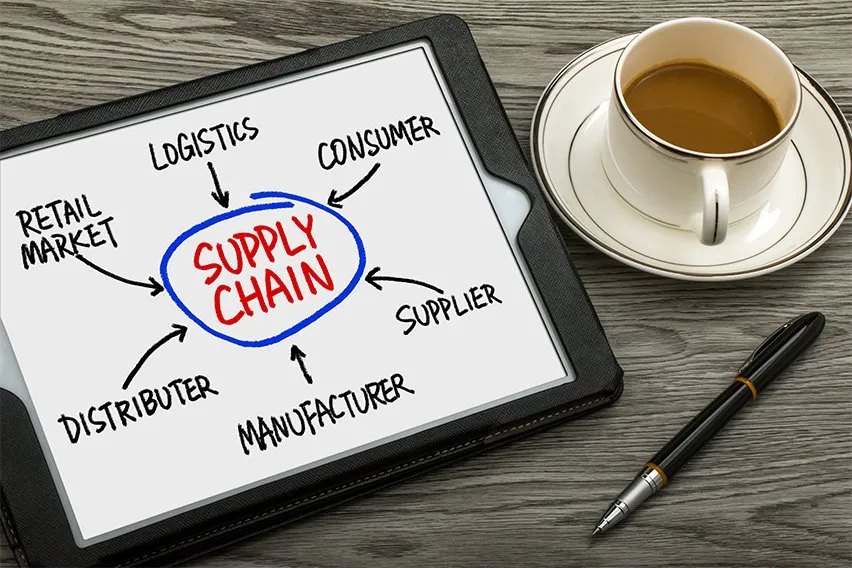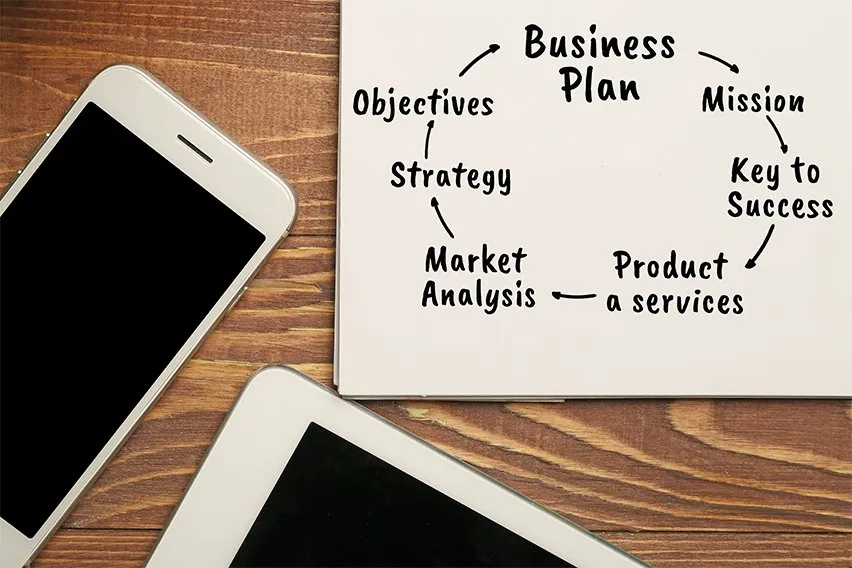Supply Chain Planning: Process, Strategy & Benefits

One of the hottest business topics right now is all about supply chain management. Supply chains have been severely affected by the pandemic. It’s been such an issue that some businesses have had to halt production altogether. This creates a compounding issue. Of course, production affects sales. It also affects demand. As such, supply chain management is crucial. As with anything, the first step to management is planning. Keep reading to learn more about the supply chain planning process.
Here’s What We’ll Cover:
What Is Supply Chain Planning (SCP)?
The Supply Chain Planning Process
The Benefits of Supply Chain Planning
What Is Supply Chain Planning (SCP)?
Supply chain planning is the process of planning the production of a product. That seems simple, but there’s a lot more to it than you may think. This isn’t just how the product is made. Supply chain planning takes into account every step from raw material to finished product. It requires supply planning, as well as planning surrounding every stage of the product’s life.

The Supply Chain Planning Process
When you’re reviewing your supply chain plan, you’ll find that the process consists of 5 distinct steps. The objective is to know every part of a product’s life cycle, and to plan around it. There are a number of benefits to this, and we’ll cover them later on in this article. Below are the 5 steps of the SCP process, and what they consist of.
Step 1: Supply Management
As the name implies, the supply management step of the SCP process involves managing your supplies. The main goal of the first step is creating a supply plan. You want to be able to identify where your business’s goods are coming from. This includes raw materials, as well as production services. It also involves making sure that financial goals are met when it comes to supplies.
Step 2: Demand Planning
For a business to have an efficient chain, it needs to be able to forecast the demand for its products. Understanding when products are going to be in demand, and how much you’ll need, leads to more accurate supplies. Demand planning goes by a number of different names, like demand management. The main objective of demand management is related to inventory management. Inventory costs, as well as inventory levels, should be based on demand.
Step 3: Production Planning
Making a plan for production is the third step in the SCP process. The production planning step should analyze the entire production flow. This means production scheduling, production efficiency, and actual production need to be analyzed. An often overlooked portion of SCP is labor. Production planning should also include information and planning for your labor resources.
Step 4: Operations Planning
Supply chain operations can make or break any business. If operations aren’t efficient, then production can be slowed. This can make an impact on every part of the supply chain process. This step builds on production planning. Here is where the production schedules will be aligned properly, so that the supply chain flows smoothly.
Step 5: Sales Planning
Sales planning takes into account the effect of sales on the supply chain. An accurate sales forecast can help keep production flowing. If sales aren’t accounted for, then supply chains can break down. This is the step that brings everything together. It is a variable that can be plugged into the other steps, changing the requirements for the entire supply chain.
Strategies for SCP
When you’re going through the SCP process, there are several different business planning strategies that can be used. Depending on your business, you may want to use one of the strategies listed below:
- Use a supply with demand plan. If you can use demand forecasting to drive supply, you’ll see more success. Accurate demand forecasts can provide the best supply chain plans. However, demand volatility can throw a wrench into these plans.
- Use the just in time method. When you strategize SCP with the just in time method, you can see lower overall costs for your business. The just in time method consists of receiving supplies “just in time” to continue production. This can be problematic for the same reasons listed above, however.
- Create a predictable supply. This is one of the most effective SCP strategies. When you can create a supply chain that’s predictable, you’ll have less to worry about in terms of volatility. Adjustments to inventory can be made when necessary using this strategy because the supply will be reliable.

The Benefits of Supply Chain Planning
When you’ve gone through the steps of creating a supply chain plan, you’ll see a number of benefits. Take these major advantages into consideration if you’re debating going through the SCP process.
- Efficiency: When you have an effective plan, you become more efficient. You’ll no longer have to guess at where supplies are coming from. You’ll have a plan for every part of the supply chain process. This turns your business into a well-oiled machine.
- Decreased Costs: When things move smoothly, costs will decrease. You’ll be able to prevent unnecessary inventory costs, as well as shipment costs and operational costs. If your business doesn’t have a supply chain plan, you’ll likely pay for things you don’t need to pay for.
- Resource Knowledge: Taking the time to plan your supply chain educates you. This is crucial for any business. Knowing where resources come from means that you also know when you can shop around for better prices. It also means that your business has a backup if a supplier has any issues with your materials.
Key Takeaways
Supply chain planning is crucial for any business. Having a plan regarding your products is necessary for a number of reasons. Taking the time to plan your supply chain can lead to a more successful business overall. For more articles like this, visit our resource hub!
RELATED ARTICLES

 Consignment Sales: What Is & How Does It Work?
Consignment Sales: What Is & How Does It Work? What Is Cost Breakdown Structure?
What Is Cost Breakdown Structure? 9 Essential Components of a Business Plan
9 Essential Components of a Business Plan Understanding the Top Business Valuation Methods
Understanding the Top Business Valuation Methods ASPE Vs IFRS: What’s the Difference?
ASPE Vs IFRS: What’s the Difference? Push Vs Pull Strategy: What’s the Difference?
Push Vs Pull Strategy: What’s the Difference?